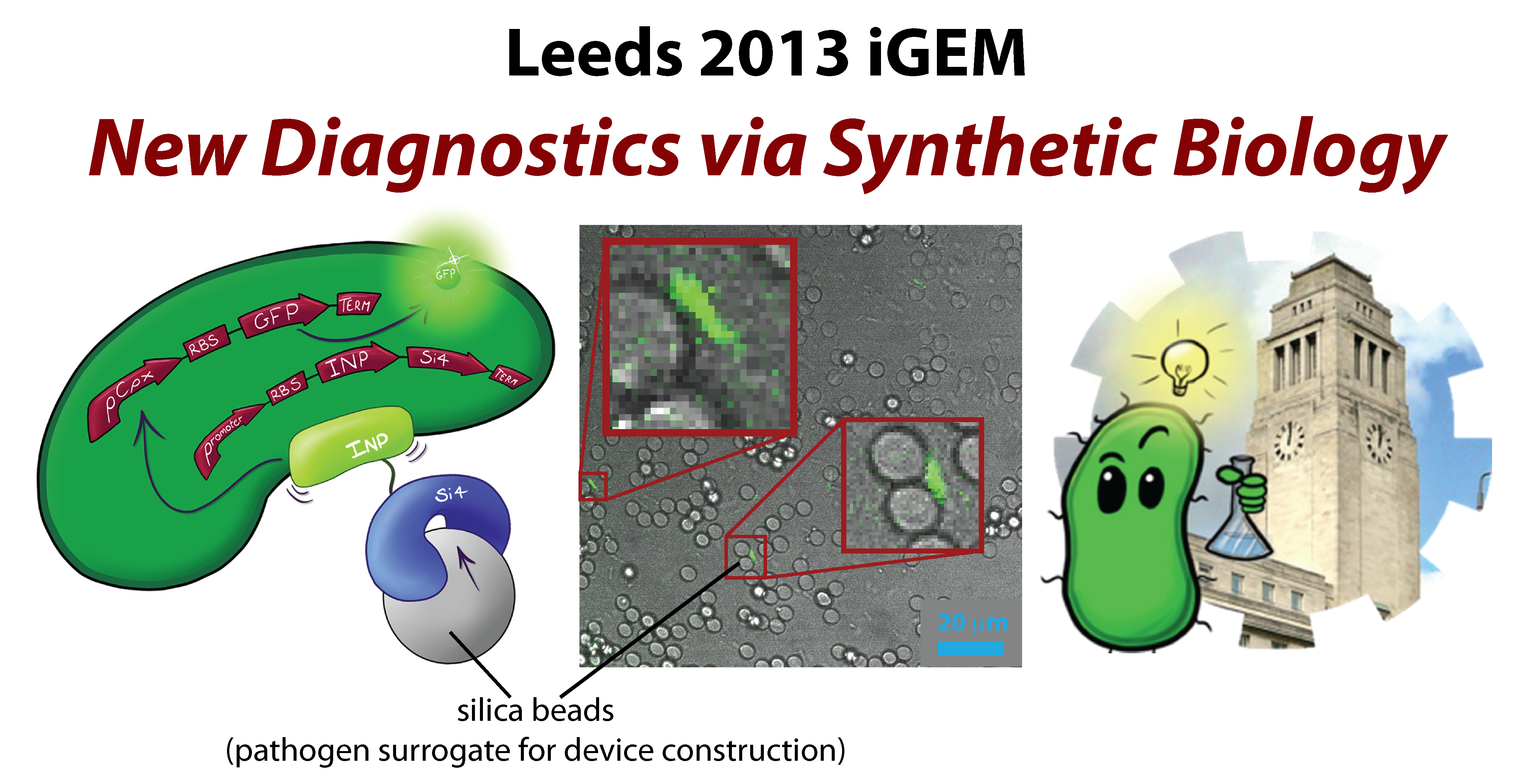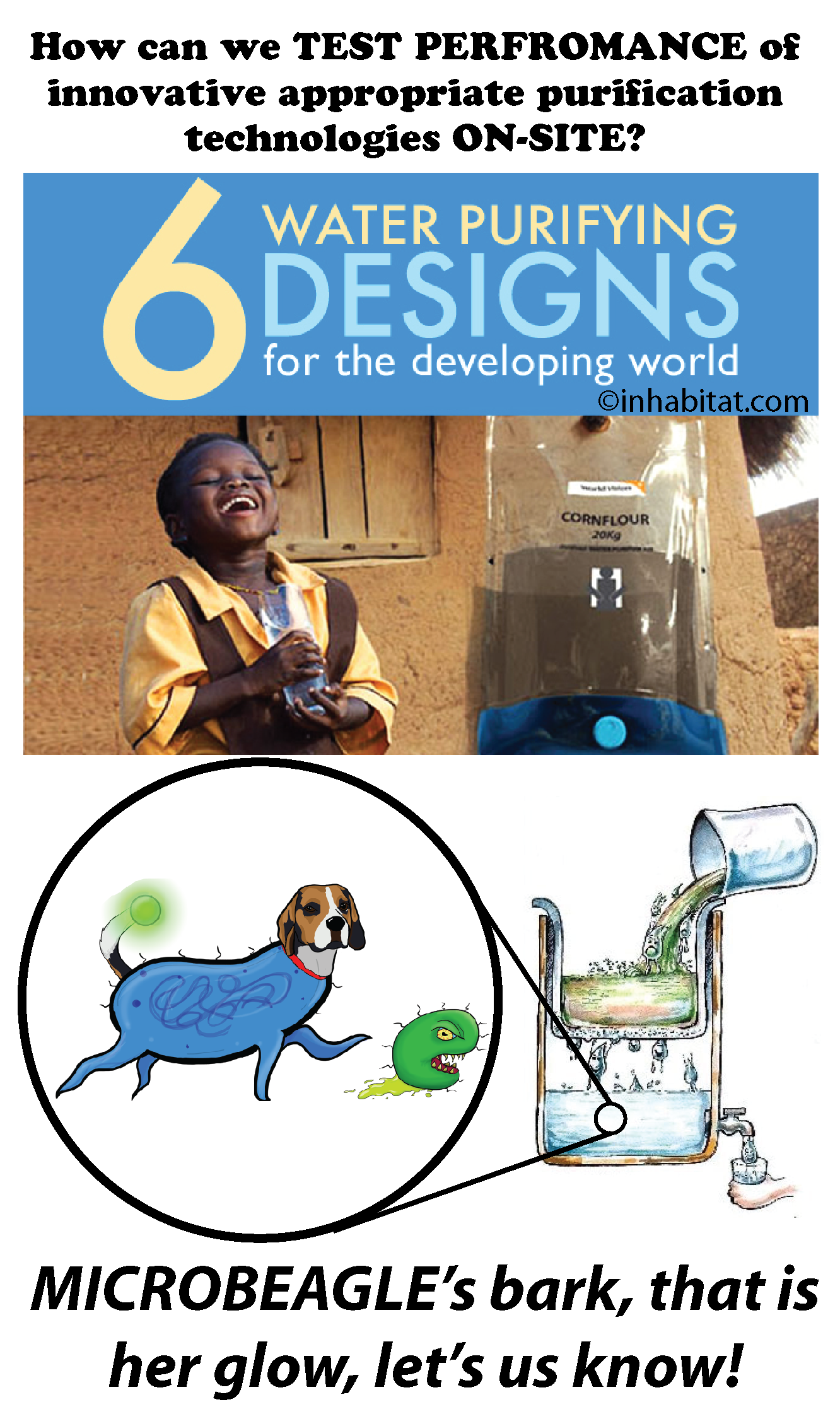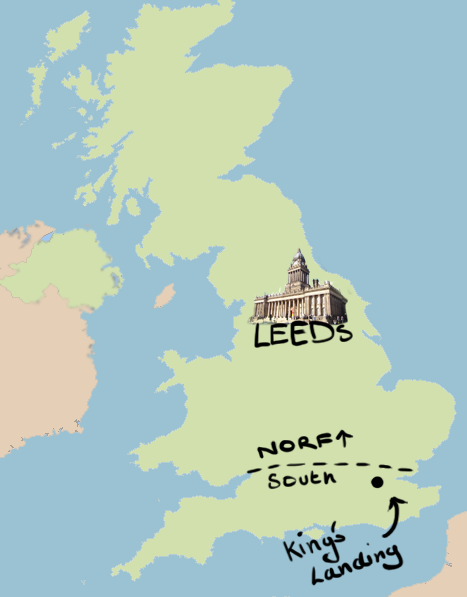Team:Leeds
From 2013.igem.org
(Difference between revisions)
m |
|||
| Line 10: | Line 10: | ||
[[File:Leeds sooperheader3.png|center|750px|awesome looking header|link=|frameless]] | [[File:Leeds sooperheader3.png|center|750px|awesome looking header|link=|frameless]] | ||
<br> | <br> | ||
| - | + | <font size="6">[[Team:Leeds/Project|The Microbeagle]]</font> | |
<br> | <br> | ||
| - | == | + | ==A biological system designed to detect the presence of pathogens in water samples== |
Micro-Beagle is a novel reporter system for E-coli that, as an iGEM first, has been designed to dynamically detect arbitrary target solids (including other cells) through a mechanism activated by cell surface binding. | Micro-Beagle is a novel reporter system for E-coli that, as an iGEM first, has been designed to dynamically detect arbitrary target solids (including other cells) through a mechanism activated by cell surface binding. | ||
| - | [[File:Leeds_NEWBS3image.png|400px|right| | + | [[File:Leeds_NEWBS3image.png|400px|right|An example of a low scale water purification system|link=http://www.purefilteredwater.com/bsf.htm|frameless]] |
Micro-Beagle was initially developed to address the need for a low cost, energy efficient and robust tool to be used to assess the effectiveness of current water purification systems. As the Micro-Beagle is intended to operate at a low cost it is ideal for use in low-income areas where water testing cannot be maintained at an acceptable frequency. | Micro-Beagle was initially developed to address the need for a low cost, energy efficient and robust tool to be used to assess the effectiveness of current water purification systems. As the Micro-Beagle is intended to operate at a low cost it is ideal for use in low-income areas where water testing cannot be maintained at an acceptable frequency. | ||
| Line 24: | Line 24: | ||
We foresee Micro-Beagle being adapted for both the detection of waterborne pathogens and a variety of other diagnostic applications, and we envision future multisensor Micro-Beagles in which diverse pathogens can be simultaneously and quantitatively measured from a single water sample | We foresee Micro-Beagle being adapted for both the detection of waterborne pathogens and a variety of other diagnostic applications, and we envision future multisensor Micro-Beagles in which diverse pathogens can be simultaneously and quantitatively measured from a single water sample | ||
| - | |||
| - | |||
| - | |||
| - | |||
| - | |||
<br> | <br> | ||
==The Leeds 2013 iGEM team== | ==The Leeds 2013 iGEM team== | ||
| Line 36: | Line 31: | ||
Leeds is a city in West Yorkshire, in the North of England. It has strong historical ties to the wool industry, and is famous for the Tetley brand of bitter ale. | Leeds is a city in West Yorkshire, in the North of England. It has strong historical ties to the wool industry, and is famous for the Tetley brand of bitter ale. | ||
| - | The University of Leeds is a British Red Brick and member of the | + | The University of Leeds is a [http://en.wikipedia.org/wiki/Red_brick_university British Red Brick] and member of the Russell Group and was officially formed as an independent university via Royal Charter from King Edward VII in 1904. |
| - | + | ||
<br> | <br> | ||
}} | }} | ||
Revision as of 09:25, 2 October 2013
 "
"












